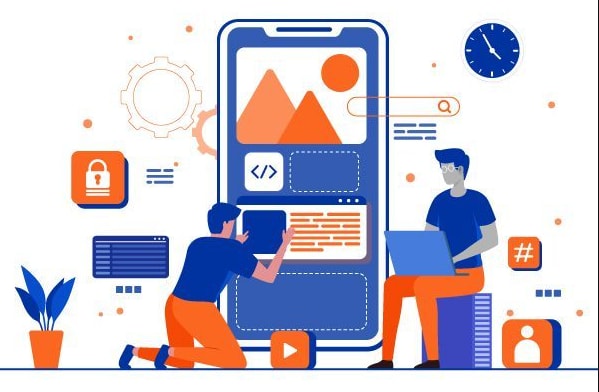What You Need to Know


If you’re thinking about launching a mobile app in 2025, you’re not alone-mobile apps are more essential than ever. But here’s the hard truth: building a high-quality app isn’t a one-size-fits-all process, and the costs can vary widely based on several factors. Whether you’re creating an e-commerce app, a game, or a healthcare solution, understanding the financial investment required can make or break your project.
In the past, building an app was a straightforward process with set costs. Today, however, with the rise of advanced technologies like AI, AR, and blockchain, and increasing demand for seamless user experiences, the complexity and cost of app development have skyrocketed.
If you’re looking to create a top-tier app in a competitive market like Dallas, partnering with a mobile application development company is essential. From choosing the right development team to factoring in design, features, testing, and launch-every detail affects your bottom line.
In this post, we’ll break down the key components of mobile app development costs in 2025, so you can plan and budget accordingly before diving into your next big idea.
Understanding the Key Components of Mobile App Development Costs
To understand the true cost of building a mobile app, it’s important to break down the process into its key components:
App Design
App design is more than just aesthetics-it’s about creating an intuitive user experience (UX) and an engaging user interface (UI). In 2025, user expectations are at an all-time high, with users demanding sleek, fast, and highly responsive apps.
Design costs can range from $5,000 to $50,000 or more, depending on the complexity of the app and the design’s sophistication. High-end, customized designs with animations, transitions, and unique elements will generally cost more.
App Features and Functionality
The more features you want in your app, the higher the cost. Simple apps with basic functionality-like a to-do list or a simple information-based app-will cost less, typically between $10,000 to $50,000. However, if your app requires advanced functionalities such as social media integration, geolocation, AI, or e-commerce capabilities, the price will increase.
For example, integrating real-time data syncing or creating a payment gateway for e-commerce apps can cost between $20,000 and $80,000, depending on the complexity of these features. Apps that require AI algorithms or AR functionalities might be priced much higher.
Backend Development
Backend development involves building the infrastructure that powers your app, including databases, servers, and APIs. This is where a lot of hidden costs can emerge, particularly if your app requires heavy data processing or needs to scale quickly.
A basic backend might cost between $10,000 and $50,000, but more complex applications (especially those that need real-time communication, such as chat apps or live streaming) can push backend development costs well over $100,000.
Platforms (iOS, Android, or Both)
Whether your app is built for iOS or Android, or if you’re going for both platforms, the costs can vary. Developing an app for a single platform generally costs less than developing it for multiple platforms.
A single platform app will typically cost between $25,000 to $50,000. However, building for both iOS and Android can double that cost, bringing the price range to between $50,000 to $150,000, depending on the complexity and features.
To further reduce costs while expanding your app’s reach, many businesses opt for cross-platform development using frameworks like React Native or Flutter, which may cost between $40,000 and $100,000 for both platforms.
App Testing and QA
Before launching your app, thorough testing is essential to ensure a smooth user experience. This includes manual testing, automated testing, and beta testing.
QA (Quality Assurance) can cost anywhere from $5,000 to $20,000, depending on the size of your app and the number of testing cycles required. Apps with multiple complex features or those that require high reliability (e.g., healthcare or financial apps) may require more extensive testing, raising costs further.
Maintenance and Updates
The work doesn’t stop once the app is launched. Regular maintenance and updates are crucial for fixing bugs, improving security, and adding new features. On average, app maintenance costs around 15-20% of the initial development cost per year. So, if your app cost $100,000 to build, you can expect to pay around $15,000 to $20,000 annually for maintenance.
In 2025, as technology evolves, your app may need to be updated regularly to keep up with new mobile operating system versions, devices, and security protocols.
Why Partnering with the Right Team Matters
Now that we’ve broken down the components, it’s clear that the cost of building a mobile app in 2025 depends on various factors: complexity, platform, design, and more. But the biggest factor influencing the final price tag is the development team you choose.
If you’re based in Dallas, working with a team of mobile app development in Dallas can provide several advantages:
Local Expertise: A local team understands the unique market dynamics, regulations, and user preferences in your area, which can influence both design and functionality decisions.
Customized Solutions: Local app developers can offer tailored, scalable solutions that align with your company’s specific needs, reducing unnecessary features and streamlining the development process.
Clear Communication: Working with a local development team allows for easier communication and quicker feedback loops, leading to fewer misunderstandings and faster turnaround times.
Whether you’re building a simple app or an enterprise-level platform, partnering with a skilled development company ensures that you’re investing in quality, not just cutting costs.
Hidden Costs in Mobile App Development
While we’ve covered the main development costs, it’s important to keep in mind the hidden costs of building a mobile app:
Marketing and Launch Costs: A great app needs great marketing. App store optimization (ASO), app launch events, and digital marketing campaigns can add tens of thousands of dollars to your budget.
Legal and Compliance: If your app handles sensitive data (healthcare, finance, etc.), you may need to invest in legal compliance, data protection policies, and terms of service agreements to avoid future legal issues.
Third-party Integrations: If your app needs to integrate with other services (e.g., payment gateways, social media, third-party APIs), this can add both time and cost to the development process.
These additional expenses can sometimes be overlooked in the initial planning stages, so make sure to account for them in your budget.
Start Planning Your App Development Budget Today
Building a mobile app in 2025 is a significant investment, but it’s one that can pay off if done correctly. By understanding the factors that influence costs, from design and features to platform choice and testing, you can make informed decisions about where to allocate your resources.
Whether you’re creating an app for a startup or scaling up an enterprise-level solution, the key to staying within budget is working with a skilled mobile application development company that understands your vision and can deliver a high-quality product within your budget.
As you plan your app development journey, keep in mind that the right app is an investment in your business’s future. With the proper team and strategy in place, the returns will far outweigh the costs.
99 Wall Street, New York, NY 10005, United States
Saasweber is a knowledge based company and provide high quality informative contents.
This release was published on openPR.
link






